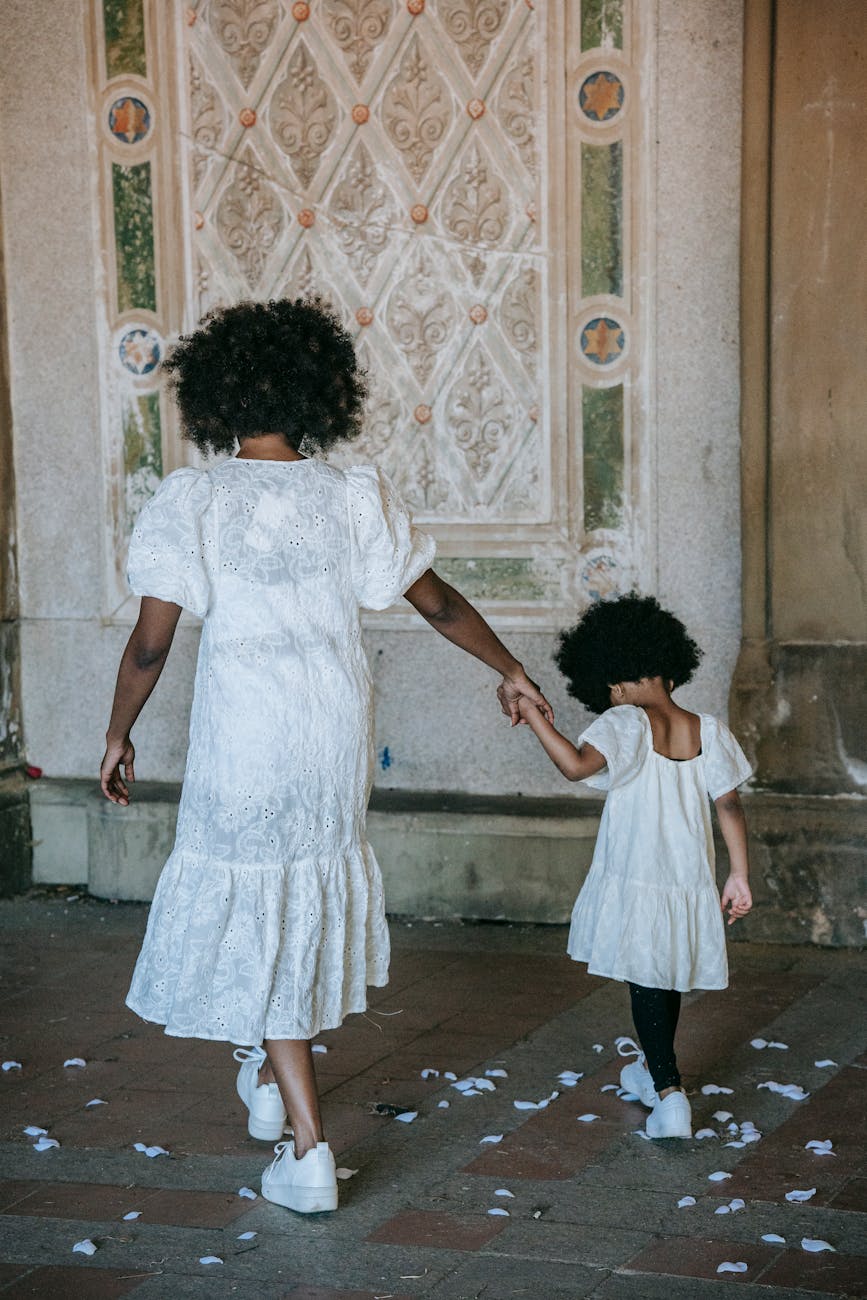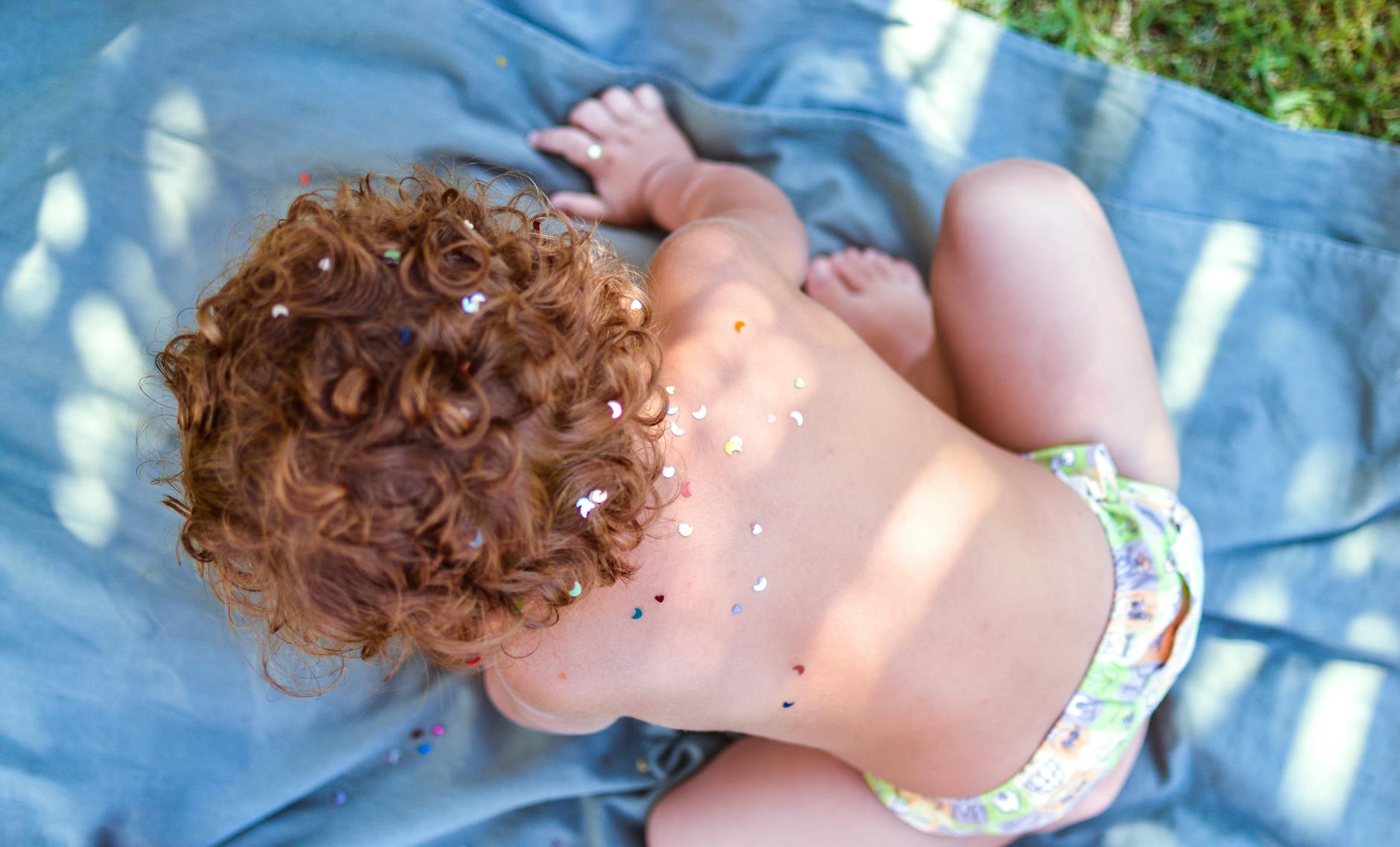“Don’t touch it, I’ve got it!” — your formerly bath-dodging five-year-old, now a nearly-tween with opinions and edge control preferences.
This chapter is all about the transition: from you managing the mop to them taking the reins. We’re talking independence, confidence, peer pressure, and, yep… occasional hot messes (both literal and emotional).
Let’s prep them to grow up proud — and curl-savvy.
🧼 When Independence Begins (a.k.a. Letting Them Try)
You’ll know the moment it starts.
They’ll start asking, “Can I do it myself?” or “Do I have to wear that style?”
Cue the inner panic. But also? Good. That means they’re ready to start owning their crown.
How to help them get there:
- Create a simple hair care chart: steps + days + pictures = empowerment.
- Let them choose products (with guidance). Kid-friendly packaging and scents go a long way.
- Do it together first, then let them take over little by little: co-wash today, detangle next week, style next month.
- Celebrate the effort, not the perfection. (Frizzy pineapple? Still a win.)
Your job shifts from doing to coaching. And eventually? Cheering from the sidelines with a satin bonnet in hand.
👧🏽 Navigating Peer Pressure, Straightening Fads, and Curl Envy
This one’s tender. Because the world still tells curly-haired kids — especially Black and brown kids — that straight is better. That frizz is messy. That difference is a problem.
Here’s what to watch for:
- Sudden requests for straightening or heat tools “just this once”
- Comments like, “I wish my hair was like [insert Disney character here]”
- Reluctance to wear natural styles to school
What to do:
- Don’t shame. Ask questions. Listen deeply.
- Talk openly about media representation and beauty standards.
- Share stories and photos of natural-haired icons. Pull out your own childhood pics if you’ve got ‘em.
Reassure them: their curls aren’t “extra” — they’re extraordinary.
Pro tip: sometimes curl envy isn’t even about hair. It’s about fitting in. Address the deeper “why,” not just the strands.
🪞Teaching Them to Care for Their Own Hair (Without Hovering)
Yes, you’ll still need to:
- Remind them to deep condition once a week.
- Rescue the microfiber towel from the floor.
- Decode their “mystery” breakage (spoiler: it’s probably over-brushing).
But increasingly, you’ll be teaching them how to:
- Understand their hair’s needs on different days
- Spot product overload vs. dryness
- Feel proud of their texture in all its states — wet, dry, defined, fluffed out
Think of this stage like driver’s ed: you’re still in the car, but you’re not gripping the wheel anymore.
🛑 Boundaries, Opinions, and Respect
They might want to wear their curls out when you’d prefer a protective style. They might want bangs (yes, even with 4C hair — pray for us all). They might start experimenting.
Let them.
You can guide, suggest, and even cringe a little. But avoid turning hair into a battleground. The goal? Ownership. Not obedience.
If your child wants to cut, color, or straighten, have real convos:
- Why do you want that?
- Is this about expression or pressure?
- Can we do this safely, or is it a hard no for now?
Give them tools to make informed decisions — not just rules to follow.
Final Comb-Through:
- Growing up curly means growing into confidence. That takes time, patience, and space to explore.
- Your role shifts from hands-on stylist to guide-on-the-side.
- Keep celebrating, teaching, and listening.
- Your child’s hair journey is a long one. Make sure love is braided into every step.




